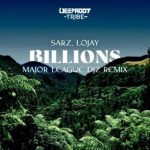
Afrobeats has risen to become a global musical powerhouse, captivating audiences worldwide with its infectious rhythms, vibrant energy, and culturally rich sound. Its journey from a local sound in West Africa to a genre dominating international charts is nothing short of revolutionary. Rooted in African traditional sounds and fused with global influences, Afrobeats represents the evolution of African music in the 21st century.
In this article, we’ll take a deep dive into the origins of Afrobeats, trace its historical development, and examine the modern evolution that has seen artists like Burna Boy, Wizkid, and Davido bring the genre to new heights. We’ll also answer some frequently asked questions (FAQs) to provide a comprehensive understanding of the Afrobeats revolution.
RELATED: How Amapiano Music is Redefining South Africa’s Musical Landscape
What is Afrobeats?
Afrobeats is a contemporary music genre that blends traditional African rhythms with modern elements of jazz, funk, hip hop, dancehall, and highlife. Originating from West Africa, particularly Nigeria and Ghana, Afrobeats has become synonymous with upbeat, danceable tracks featuring percussive beats, catchy melodies, and often socially conscious lyrics.
While it shares some similarities with the older genre known as “Afrobeat,” popularized by Fela Kuti in the 1970s, Afrobeats is distinct in its use of digital production, cross-genre influences, and its focus on pop-oriented sounds.
The Roots of Afrobeats
1. Afrobeat: The Precursor
The story of Afrobeats cannot be told without mentioning Afrobeat, the genre created by Nigerian musical legend Fela Kuti in the late 1960s and early 1970s. Afrobeat is a fusion of traditional African music with jazz, funk, and highlife, featuring complex rhythms, powerful horns, and politically charged lyrics. Fela used Afrobeat as a platform to challenge corrupt governments, speak out against social injustices, and promote African unity and pride.
Afrobeat laid the groundwork for the modern Afrobeats genre, serving as an inspiration for many contemporary African artists who would later draw on Fela’s legacy to craft a new sound.
2. Highlife and Traditional African Sounds
Another important influence on Afrobeats is highlife, a genre that originated in Ghana in the early 20th century. Highlife blends Western instruments and jazz with African rhythms and melodies. This fusion, combined with the influence of traditional African drumming and chanting, helped shape the foundation of what would later become Afrobeats.
Ghanaian and Nigerian artists from the 1950s to the 1980s played a crucial role in evolving highlife into a more danceable, pop-driven sound, setting the stage for the Afrobeats movement.
The Evolution of Afrobeats
1. The Digital Age and Globalization
In the late 1990s and early 2000s, advances in digital technology and the rise of the internet made it easier for African musicians to produce and distribute their music. Artists began to experiment with digital production techniques, blending traditional African sounds with global genres like hip hop, R&B, and dancehall.
This era marked the birth of Afrobeats as a distinct genre. Artists such as D’banj, 2Baba (formerly 2Face Idibia), and P-Square were pioneers in this movement, helping to push the genre beyond West Africa’s borders. Their music began to gain popularity in African diasporas around the world, particularly in the UK and the US, where a new generation of African-born artists continued to blend cultural elements from their homelands with modern sounds.
2. The Nigerian Influence
While Afrobeats is pan-African, Nigeria has been the driving force behind the genre’s global rise. Lagos, the country’s entertainment capital, became a hub for Afrobeats innovation, with artists developing a signature sound that would eventually gain global appeal.
Nigerian musicians such as Wizkid, Davido, and Burna Boy have played a pivotal role in the global success of Afrobeats. Wizkid’s collaboration with Drake on the 2016 track “One Dance” was a major milestone, helping to introduce Afrobeats to mainstream audiences around the world. Burna Boy, with his Grammy-winning album Twice as Tall, has further solidified the genre’s presence on the global stage, positioning Afrobeats as a key player in world music.
The Afrobeats Revolution: Global Recognition
The 2010s and beyond have seen the Afrobeats genre achieve unprecedented international recognition. African artists are headlining major festivals, selling out concerts globally, and receiving prestigious awards. The genre’s appeal lies in its ability to connect with people from diverse backgrounds, thanks to its infectious beats, relatable themes, and a universal love for rhythm and dance.
1. Collaborations with International Artists
Afrobeats artists have also caught the attention of global superstars, leading to collaborations that have further propelled the genre. Notable examples include Beyoncé’s The Lion King: The Gift, which features several Afrobeats artists, including Burna Boy, Tiwa Savage, and Yemi Alade. This project not only showcased Afrobeats to a global audience but also cemented its place in the mainstream music industry.
2. Streaming and Social Media Impact
Platforms like YouTube, Spotify, and Apple Music have played a critical role in the global dissemination of Afrobeats. Streaming services have made it easier for artists to reach a worldwide audience, while social media platforms like Instagram, TikTok, and Twitter have helped create viral Afrobeats hits. Songs like Davido’s “Fall” and Burna Boy’s “Ye” gained international popularity largely due to their digital presence, becoming anthems in clubs and on radio stations around the world.
Modern Afrobeats: A Fusion of Sounds and Cultures
One of the most defining aspects of modern Afrobeats is its fusion of various genres. Artists today incorporate elements of trap, EDM, reggaeton, and more into their music, resulting in a hybrid genre that appeals to a broad audience. While the traditional African rhythms and beats remain at the core of Afrobeats, it has evolved to encompass a more global sound.
Afrobeats is also a cultural export, with its fashion, dance, and language making an impact globally. Dance challenges on platforms like TikTok have turned Afrobeats songs into worldwide sensations, while the genre’s distinct fashion style, characterized by vibrant colors and African prints, has been embraced by global fashion icons.
RELATED: The Popularity of Amapiano Music in South Africa: A Phenomenon Explained
10 Frequently Asked Questions (FAQs) About Afrobeats
1. What is Afrobeats?
Afrobeats is a modern African music genre that blends traditional African rhythms with elements of jazz, funk, hip hop, and dancehall.
2. How is Afrobeats different from Afrobeat?
Afrobeats is a more modern, pop-influenced genre, while Afrobeat, pioneered by Fela Kuti, is known for its politically charged lyrics and complex instrumentals.
3. Who are the pioneers of Afrobeats?
Artists like 2Baba, D’banj, and P-Square helped pioneer Afrobeats in the late 1990s and early 2000s.
4. What role did Fela Kuti play in Afrobeats?
Fela Kuti’s Afrobeat heavily influenced Afrobeats, but the genres are distinct. Fela’s work laid the foundation for many African musicians who later shaped Afrobeats.
5. Why is Nigeria central to the Afrobeats revolution?
Nigeria, particularly Lagos, has been the hub of Afrobeats innovation, producing globally recognized artists like Wizkid, Burna Boy, and Davido.
6. Which international artists have collaborated with Afrobeats musicians?
Artists like Drake, Beyoncé, and Chris Brown have collaborated with Afrobeats musicians, helping the genre reach global audiences.
7. How has digital streaming affected the rise of Afrobeats?
Platforms like Spotify, YouTube, and Apple Music have made Afrobeats accessible to a global audience, helping it gain international popularity.
8. What are some of the biggest Afrobeats hits?
Popular Afrobeats songs include “Ye” by Burna Boy, “Fall” by Davido, and “Essence” by Wizkid.
9. How has social media helped Afrobeats grow?
Social media platforms like Instagram and TikTok have played a key role in the viral spread of Afrobeats music and dance challenges.
10. What does the future of Afrobeats look like?
With its growing international popularity and constant evolution, Afrobeats is poised to continue its ascent as a global music force.
Conclusion
The Afrobeats revolution has transformed the genre from a regional sound to a global musical movement. Rooted in African rhythms and shaped by modern influences, Afrobeats has become a key player in the global music scene, uniting people through its infectious beats and cultural richness. As artists continue to innovate and collaborate with international stars, the future of Afrobeats looks brighter than ever.











 Kabza De Small – Wela Marn ft. Djy Vino & Nkulee501
Kabza De Small – Wela Marn ft. Djy Vino & Nkulee501  Nkosazana Daughter – Emsakazweni
Nkosazana Daughter – Emsakazweni  UBizza Wethu – Umthwalo ft. Vee Ngwenya, Angazz & Sinethemba Booi
UBizza Wethu – Umthwalo ft. Vee Ngwenya, Angazz & Sinethemba Booi  Makhadzi – Moya Wanga ft. Mr Bow, Mawhoo & Nkosazana Daughter
Makhadzi – Moya Wanga ft. Mr Bow, Mawhoo & Nkosazana Daughter  Makhadzi – Stop GBV ft. Dr Skaro & Master KG
Makhadzi – Stop GBV ft. Dr Skaro & Master KG  Shandesh – Mathata ft. Shebeshxt
Shandesh – Mathata ft. Shebeshxt  Cy. – Ithuba ft. Veena
Cy. – Ithuba ft. Veena  Pcee – Gabhuza ft. LeeMcKrazy, Mr JazziQ, Xduppy, Mellow & Sleazy
Pcee – Gabhuza ft. LeeMcKrazy, Mr JazziQ, Xduppy, Mellow & Sleazy